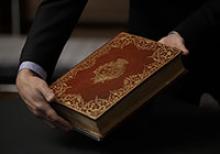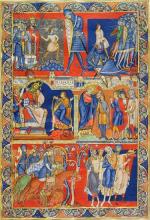A Letter From Helen Keller
Submitted by Thaw Conservati... on Thu, 05/16/2024 - 10:57amThe Morgan holds in its collection two letters handwritten by Helen Keller in 1890, one of which is currently on view in the East Room of J. Pierpont Morgan’s Library. Keller’s lifetime of accomplishments, despite having lost her sight, hearing and speech at a very young age, are already familiar to most people. Yet this letter, written when she was only ten years old, provides extraordinary material evidence of her determination to overcome barriers to communication and engage with the outside world.










